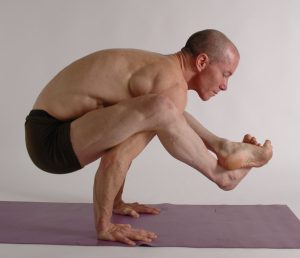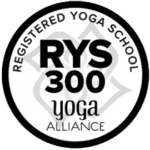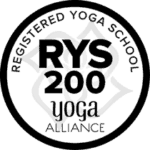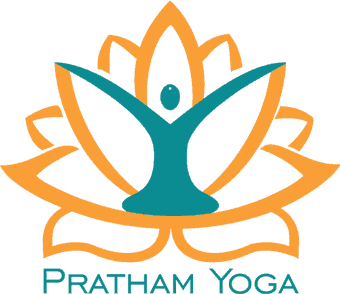Bhujapidasana Mastery with Pratham Yoga
Enter the peaceful world of yoga, where traditional wisdom and modern techniques coexist. Introducing Bhujapidasana, the Shoulder-Pressing Pose, a powerful, balanced, and spiritually awakening pose. Let’s explore the intriguing history, precise method, and numerous advantages of Bhujapidasana as we go on this adventure. Come along on this journey as we merge our way with the essence of Pratham Yoga, a company dedicated to the profound lessons and transformative power of yoga.
History of Bhujapidasana
Bhujapidasana is deeply rooted in the ancient practice of yoga, tracing its origins to the classical texts like the Hatha Yoga Pradipika and the Yoga Sutras of Patanjali. The Sanskrit name, a fusion of “Bhuja” (arm or shoulder) and “Pida” (pressure or squeeze), encapsulates the essence of the pose – a harmonious blend of strength and compression. The historical context of Bhujapidasana lies in its integration into traditional yogic sequences, where it serves as a gateway to more advanced postures, fostering physical mastery and spiritual growth.

Technique
Practicing Bhujapidasana requires a mindful approach and a connection to breath. Follow these steps to experience the pose with precision:
– Begin in Tadasana (Mountain Pose): Stand tall with your feet hip-width apart, grounding yourself into the mat.
– Transition into Malasana (Deep Squat): Bend your knees and lower your hips, coming into a deep squat position. Keep your feet slightly wider than hip-width apart.
– Place Your Hands on the Mat: Bring your hands to the mat, shoulder-width apart, fingers spread wide. Ensure a strong and stable foundation.
– Shift Weight Forward: Lift your hips, allowing your torso to come forward between your thighs. Press your knees firmly against the outer upper arms.
– Lift Off: Shift your weight onto your hands, engaging your core. Lift your feet off the ground, bringing your shins parallel to the floor.
– Inner Thigh Engagement: Squeeze your inner thighs against the outer upper arms, creating a secure connection.
– Maintain Gaze and Breathe: Keep a steady gaze forward, lengthening the back of your neck. Breathe deeply and hold the pose for 15-30 seconds.
– Release: Gently lower your feet to the mat and return to a standing position.
Benefits of Bhujapidasana
As practitioners, embracing Bhujapidasana can unlock a myriad of physical and mental benefits
– Core Strength: The pose challenges and strengthens the abdominal muscles, promoting a stable and powerful core.
– Arm and Shoulder Endurance: Bhujapidasana builds strength in the arms, shoulders, and wrists, enhancing upper body endurance.
– Balance and Focus: Balancing on the hands demands concentration, fostering mental focus and clarity.
– Digestive Health: The compression of the abdomen stimulates digestive organs, aiding in digestion and alleviating digestive issues.
– Hip and Groin Flexibility: The deep squat position opens and stretches the hips and groin, enhancing flexibility in these areas.
– Leg Toning: Holding the legs parallel to the ground activates and tones the quadriceps and hamstrings.
Modifications and Precautions
Pratham Yoga encourages practitioners to approach Bhujapidasana with mindfulness, making it accessible to all levels. Consider the following modifications and precautions
– Use Props
Placing yoga blocks under your hands can provide additional support and make the pose more accessible, especially for beginners.
– Practice with a Wall
Practicing near a wall offers a sense of security and assists in finding balance.
– Avoid if Pregnant or with Wrist Injuries
Pregnant individuals and those with wrist injuries should exercise caution or avoid the pose to prevent strain.
– Warm-Up Thoroughly
Ensure your body is properly warmed up before attempting Bhujapidasana to prevent injuries.
How Do You Prepare for Bhujapidasana?
Preparing for Bhujapidasana involves a holistic approach, aligning the body, mind, and breath. Here’s a guide on how to prepare effectively:
– Warm-Up
Begin with a series of gentle warm-up poses to awaken the body, focusing on the wrists, shoulders, hips, and core.
– Deepen Hip Flexibility
Incorporate hip-opening poses like Malasana and Baddha Konasana to prepare the hips and groin for the depth of Bhujapidasana.
– Strengthen the Core
Include core-strengthening exercises such as Boat Pose and Plank to activate the abdominal muscles.
– Practice Arm-Balancing Poses
Gradually incorporate arm-balancing poses like Crow Pose to build strength and familiarity with weight shifting onto the hands.
– Cultivate Mindfulness
Bhujapidasana requires focus and balance. Incorporate mindfulness and breath awareness into your practice to enhance concentration.
Precautions
Before diving into Bhujapidasana, keep the following precautions in mind:
– Consult a Professional
If you have existing health conditions or injuries, consult with a qualified yoga instructor or healthcare professional before attempting Bhujapidasana.
– Listen to Your Body
Pay attention to your body’s signals. If you experience pain or discomfort, ease out of the pose and modify as needed.
– Build Gradually
If you are new to yoga or arm balances, progress gradually. Master foundational poses before advancing to Bhujapidasana.
Pratham Yoga Teacher Training
For those aspiring to deepen their yoga practice or share the wisdom of yoga with others, Pratham Yoga offers comprehensive teacher training programs:
200 Hour Yoga TTC in Rishikesh
Join Pratham Yoga’s 200 Hour Yoga Teacher Training programs in India and the renowned yoga hub, Rishikesh. Learn the basics of yoga, including principles, anatomy, and teaching methods. In Rishikesh, soak in the transformative atmosphere while exploring yoga philosophy, meditation, and sequencing. Gain hands-on teaching experience in a supportive environment under the guidance of experienced instructors. These programs provide a chance to build strong personal practice and teaching skills.
300 Hour Ayurveda Yoga Teacher Training
Take your teaching skills to new heights with Pratham Yoga’s 300 Hour Ayurveda Yoga Teacher Training, a specialized program that blends Ayurveda and yoga. Discover the deep connection between Ayurvedic principles and yogic practices, and enhance your understanding of alignment, adjustments, and therapeutic applications of yoga. Alternatively, advance your journey with the 300 Hour Yoga Teacher Training in Rishikesh, delving into advanced yoga techniques, philosophy, and effective teaching methods. Immerse yourself in the spiritual haven of Rishikesh, where you’ll develop expertise in personalized alignment, adjustments, and fostering a strong student-teacher connection.
Bhujapidasana, with its roots in ancient yoga philosophy, serves as a testament to the transformative power of yoga. As we weave through the history, technique, benefits, modifications, and precautions of this empowering pose, Pratham Yoga stands as a guiding light, offering comprehensive teacher training programs that embrace the essence of yoga. Whether you embark on a 200-hour or 300-hour journey, let Bhujapidasana and Pratham Yoga be your companions on the path to self-discovery, strength, and enlightenment. The fusion of ancient wisdom and modern teachings awaits you, inviting a profound connection with the art of yoga.


